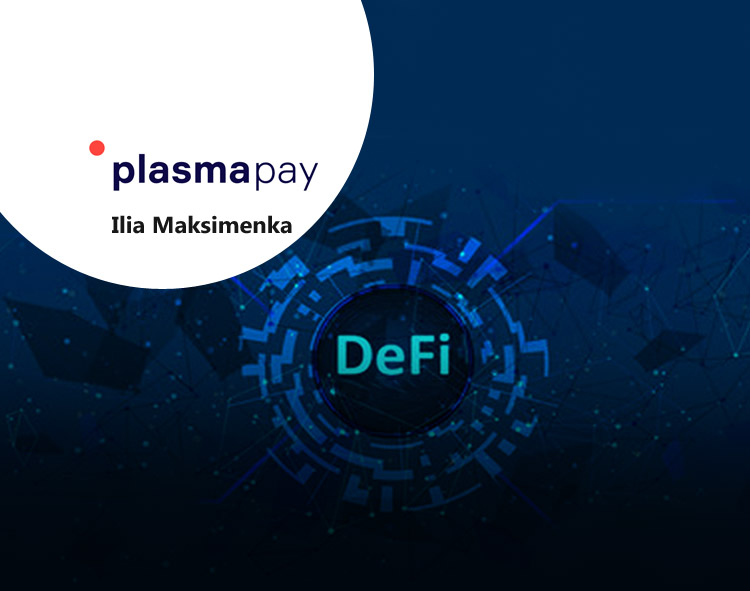While the average person will most likely remember 2020 as the year of COVID-19, for those of us in crypto, 2020 will always be synonymous with decentralized finance. DeFi has dominated the conversation this year, occupying countless column inches in every major crypto publication. As the hype grew, blockchain journalists excitedly lined up to update the community on the surging amount of collateral tied up in the sector, as the Total Value Locked (TVL) graph on the Defipulse homepage became the most shared image in the sector.
Read More: Boast.ai Raises $23M Series A to Revolutionize R&D Tax Credits with AI-Powered Approach

A cursory glance at that now-familiar TVL chart serves as a reminder that while the DeFi hype train had left the station in the early part of the year, most notably when it first surpassed the $1 billion mark in February, it had only really begun to gain steam in the latter half of the year. The excitement is understandable of course; the current TVL figure now exceeds an astonishing $13B. This represents a 2,000% increase since January 1st.
A Marquee Year
Even early in the year, DeFi was being hailed as the next big thing. While some of its proponents may have tried to rekindle the heady excitement of ICO mania, cautious heads always remained on hand to remind us how that particular fire burned so brightly before burning itself out. In reality, however, the two things have never been comparable. While DeFi may have appeared like an overnight success story or ‘bubble’ from the outside, for those of us who have been working in the sector for years, testing and building the infrastructure for the next iteration of finance, we were acutely aware that this particular overnight success story was years in the making.
Even so, there are signs that DeFi may not yet be the fully finished article we might wish it to be. The sector’s over-reliance on Ethereum quickly pushed decentralized finance to breaking point, as average transaction costs on the network spiked from a few cents at the start of the year to well above $12 in September. Fees have since dropped from that high water mark, but remain between $1-2 dollars. Transaction speeds were another casualty of DeFi’s burgeoning success as network congestion became another acute challenge.
Read More: GlobalFintechSeries Interview with Irwin Grossman, CEO and Co-founder at Delta Payment Solutions
Liquidity mining or yield farming was probably the most hyped area of DeFi this year. That fact came sharply into focus in June, when lending platform Compound launched the COMP governance token. Users lending and borrowing on the platform became eligible for daily distribution of COMP tokens, and as the price of these tokens rose, so did the rewards. COMP’s carefully crafted token model turbocharged the profitability of lending on the platform, and even made it possible to make a profit from borrowing.
Yield farming swiftly became the rocket fuel of DeFi, and while it was a positive development for liquidity and bootstrapping projects, beneath the positivity and hype lurked a darker side. Not all participants who interacted with DeFi read the small print or understood what they were getting themselves into. Even as some yield farmers collected outsized returns of up to 100%, others found the financial consequences far less favorable.
2020 was also the year in which decentralized exchanges (DEXs) rapidly reached maturation, stepping out of the shadow of their centralized peers. The DEXs benefitted not only from DeFi’s growing popularity, but the increased liquidity locked into their protocols. In Q3 of 2020, the top 10 DEXs grew by 700% while CEXs only managed around 70% by comparison.
Looking Ahead to 2021
By any measure 2020 has been a marquee year for decentralized finance, proving, beyond any doubt, that the sector has huge potential. Several trends make the outlook bright, including wider macroeconomic forces following the COVID-19 pandemic. Commentators who obsess over the TVL should find plenty of reason for excitement next year as the price of Bitcoin and Ethereum appears set to go on another bull run.
That increase in TVL will also make DeFi a more appealing target for hackers and other malicious actors. 2021 will be the year in which the code of decentralized protocols is thoroughly battle-tested to its limits. We shall see who the winners and losers are as the year plays out.
Cross-chain technology will most likely be one of the bigger trends next year, as DeFi and the wider blockchain community seek ways to alleviate Ethereum’s scaling issues. As a sector of innovation and renewal, blockchain cannot allow itself to be throttled in perpetuity by the limitations of one chain. Expect to see far greater interoperability in 2021.
Liquidity mining will continue to play a strong role in the growth of the sector, but the community at large will grow smarter and savvier about its participation. There will still be profits to be pursued but the risk/reward profiles may begin to shift as this niche matures. As Vitalik Buterin opined earlier this year: “the reality is that there’s no way that DeFi will have interest rates more than a percentage point above the best of traditional finance in the long-run.”
While 2021 will not represent the “long-run” by any stretch, it should at least signal a gradual shift into a saner and more sustainable medium-term.
As we close out 2020 we can begin to look back and appreciate what has been a great year for decentralized finance. The sector reached the consciousness of the wider crypto community and made its presence known. This is just the beginning of DeFi’s story, and 2021 could yet prove to be greater still. Whatever else happens next year, you can expect decentralized finance to loom large.
Read More: GlobalFintechSeries Interview with Konstantin Richter, CEO & Founder of Blockdaemon
Building Sales Resilience, Driving Impact and Ensuring Success in 2021: Catch more from these episodes of the SalesStar Podcast:
